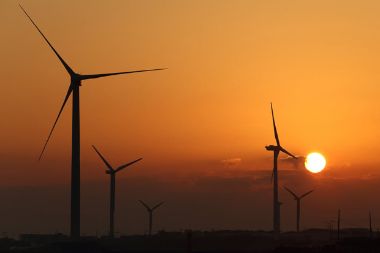
Generators operating in the Norte Chico are in a disagreement before the Panel of Experts against the coordinator for allowing Guacolda’s low cost efficient operation, forcing it to discharge up to 40% of its production.
Renewables confront Gener and CDEC SIC over excess electricity production
A dispute has been declared between the renewable energy companies operating in the Norte Chico region and AES Gener and the coordinator of the central interconnected system (CDEC SIC) over a possible over-generation by the Guacolda Thermoelectric Power Plant.
This is because up to 40% of the energy produced by the power plants located in Canela and Diego de Almagro, Region III, would be dumped, i.e., it would not be generated due to the lack of transmission capacity, which would be increased by a minimum operation above the technically efficient by the Guacolda Thermoelectric Power Plant, owned by AES Gener.
Today, the renewable companies – represented by Enel Green Power – have a complaint before the Panel of Experts about the technical minimums – the minimum gross active power that a unit can generate, connected to the grid, in its automatic control mode – declared by Guacolda, which prevents them from operating at their maximum capacity.
In particular, the complaint is against the coordinator of the central interconnected system (CDEC SIC), for setting a technical minimum above what is appropriate, allowing greater generation from the Guacolda plant to the detriment of renewables, including Enel Green Power, Acciona, First Solar and Empresas Públicas de Medellín (EPM).
“To date, particularly at the Punta Palmeras plant, a large part of this is being affected by spillage from Guacolda’s minimum operation, around 2% of annual generation. And the expectations are that the El Romero Solar plant, when it starts operations at the end of this year, will have dumping of between 15% and 30% of its expected annual production”, stated the general manager of Acciona Energía, José Ignacio Escobar.
He added, “They will be able to understand the impact that will have on the company’s revenues and long-term return expectations.”
But this case is far from being the only one. Industry sources estimate that First Solar and Enel Green Power plants could have discharges of close to 40% in certain plants due to this same factor.
Regarding the allegation by renewables, the executive director of CDEC SIC, Andrés Salgado, referred to the discrepancy during the hearing: “We understand that discharges are a problem, and I believe that since 2014 or earlier we have been working on different solutions such as audits, our analysis, studies contracted by consultants and automatisms that we have implemented together with the companies. This did not appear just now, it was in the market’s knowledge”.
However, regarding possible faults in the declaration of Guacolda’s technical minimum, he warned that it is not correct and the technical audits and consultations made to the manufacturer of the equipment of AES Gener’s power plant prove it.
A similar position was taken by Guacolda, which indicates that they should not go below the minimum set by the manufacturer as it could damage the plant and/or reduce its useful life.
Estimates. Enel Green Power commissioned the consulting firm Systep to analyze the economic impact on the system as a whole of operating Guacolda at 60 MW -the technical minimum set- versus a smaller operation.
The study showed that between September 2015 and March 2016 it had a cost overrun for the system as a whole of US$1.5 million.
This analysis corresponds to the comparison of the actual operation versus a simulated scenario with Guacolda’s units dispatched with a technical minimum of 30 MW.





